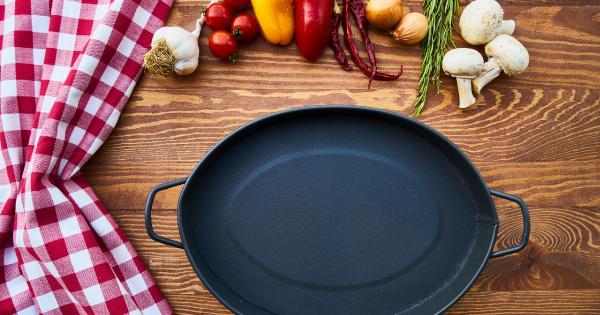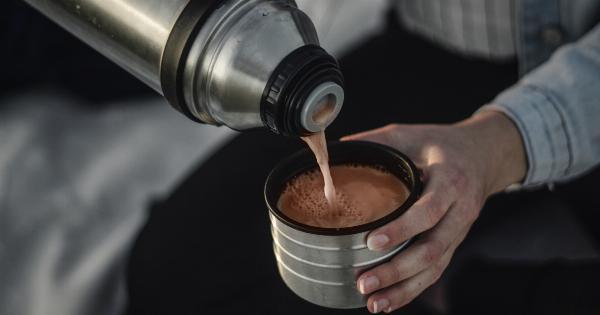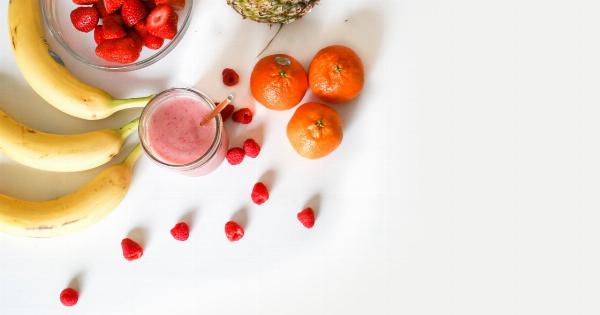Iron is an essential mineral that plays a vital role in various bodily functions. It is particularly important for the production of red blood cells and the transportation of oxygen throughout our body.
Iron deficiency can lead to fatigue, weakness, and impaired cognitive function, among other health issues.
While there are iron supplements available, it is always best to obtain nutrients from natural food sources whenever possible.
If you’re looking to boost your iron intake, here are some tricks to maximize your iron absorption and make sure you’re getting enough of this crucial nutrient:.
1. Choose Iron-Rich Foods
The first step to maximizing your iron intake is to include iron-rich foods in your diet. Good sources of iron include:.
- Red meat, such as beef and lamb
- Poultry, such as chicken and turkey
- Seafood, especially shellfish like clams, mussels, and oysters
- Leafy green vegetables, like spinach, kale, and Swiss chard
- Legumes, such as lentils, chickpeas, and beans
- Tofu and tempeh
- Nuts and seeds, such as pumpkin seeds and almonds
- Fortified cereals and bread
2. Pair Iron-Rich Foods with Vitamin C
Vitamin C enhances the absorption of iron from plant-based sources, so try to pair iron-rich foods like spinach or lentils with fruits rich in vitamin C, such as oranges, strawberries, or kiwi.
You can also squeeze some lemon juice over your iron-rich meals or add a side of tomatoes or bell peppers to help increase iron absorption.
3. Cook with Cast Iron Cookware
Cooking your meals in cast iron cookware can help increase the iron content of your food. When you cook acidic foods, like tomato sauce or chili, in cast iron, a small amount of iron gets transferred into your meal.
This is especially beneficial for individuals with iron deficiency or anemia.
4. Avoid Excessive Calcium During Iron-Rich Meals
Calcium can inhibit the absorption of iron, so it’s best to avoid consuming calcium-rich foods or supplements during meals that are high in iron.
Opt for a separate timing or choose meals that are either iron-rich or calcium-rich to maximize nutrient absorption.
5. Soak and Sprout Grains, Legumes, and Seeds
Phytic acid is a compound found in grains, legumes, and seeds that can hinder iron absorption. Soaking and sprouting these foods can help reduce the phytic acid content, making it easier for your body to absorb the iron they contain.
This process involves soaking the foods in water for a specific period and then allowing them to germinate or sprout before consuming.
6. Avoid Drinking Tea or Coffee with Iron-Rich Meals
Tannins present in tea and coffee can inhibit the absorption of iron. Therefore, it is recommended to avoid consuming these beverages during meals.
If you can’t do without your cup of coffee or tea, try to have them at least an hour before or after your iron-rich meals to minimize the impact on iron absorption.
7. Consider Iron Supplements if Needed
While it’s always best to obtain nutrients from food sources, iron supplements may be necessary for individuals with chronic iron deficiency or anemia.
However, it is crucial to consult with a healthcare professional before starting any supplements, as they can have potential side effects and interact with certain medications.
8. Be Mindful of Iron Blockers
Just as there are substances that enhance iron absorption, some can hinder it. For instance, high phytate foods like whole grains, bran, and certain legumes can decrease iron absorption.
Additionally, foods rich in oxalates, such as spinach and rhubarb, can also interfere with iron absorption. While it’s important to include these foods in a balanced diet, individuals with low iron levels may want to limit their consumption or pair them with iron enhancers.
9. Spread Iron Intake Throughout the Day
Instead of consuming most of your iron in one meal, spread it out throughout the day. This can help optimize absorption, as the body can only absorb a certain amount of iron at a time.
By distributing your iron intake across multiple meals or snacks, you provide more opportunities for absorption.
10. Get Your Iron Levels Checked Regularly
To ensure you’re meeting your iron requirements and maintaining healthy iron levels, it’s essential to get your iron levels checked regularly through blood tests.
This allows you to monitor your iron status and make necessary adjustments to your diet or supplementation if needed.
By implementing these tricks into your daily routine, you can maximize your iron intake and ensure your body gets the iron it needs to function optimally.






























